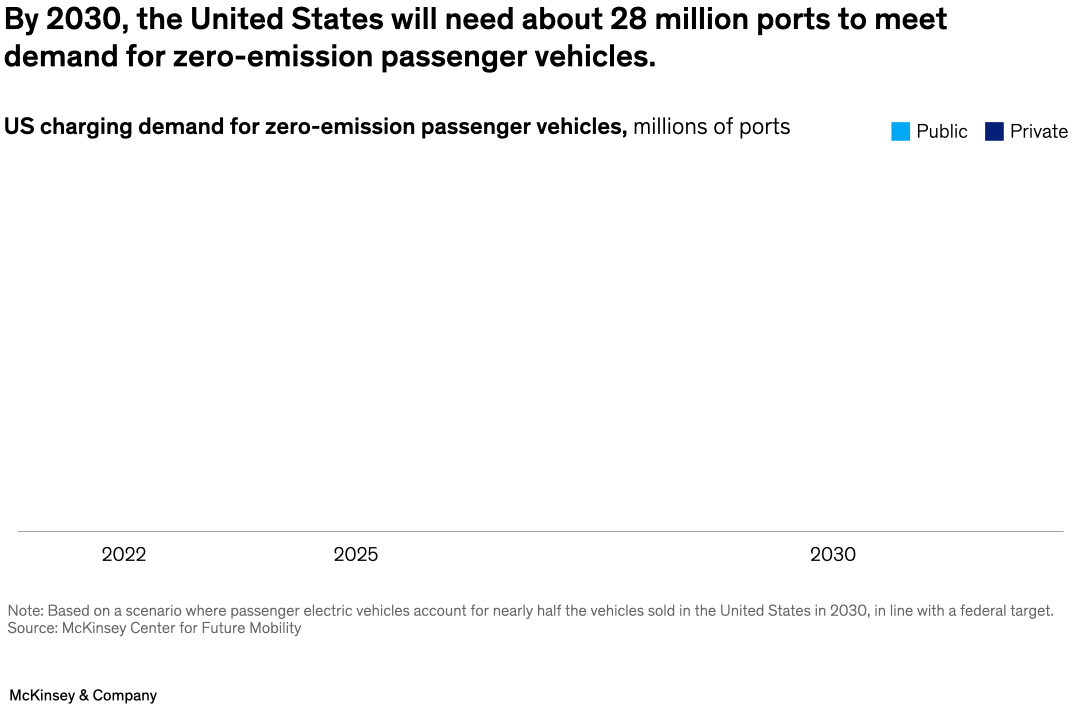Electric vehicles (EVs) accounted for about 8 percent of all new passenger cars sold in the United States last year, a record amount. By 2030, 53 percent of US cars could be EVs. By then, partner Shivika Sahdev and colleagues estimate, the United States will need about 28 million ports to meet the increased demand for battery juice. Private ports are expected to increase in number from approximately 2.5 million to nearly 27.0 million by 2030, representing about 95 percent of the total.

Image description:
A series of 3 squares show the US charging demand for zero-emission vehicles in 2022 and projected demand for 2025 and 2030, measured in millions of ports required, private and public. In 2022 there were approximately 2.6 million ports, of which 2.5 million were private and 100,000 were public. By 2025 it is estimated that there will be 9.5 million ports, of which 9.0 million will be private and 500,000 public. The projection for 2030 shows a total of 28.0 million charging ports, of which 26.5 million will be private, and 1.5 million public. This is all based on a scenario where passenger electric vehicles account for nearly half of the vehicles sold in the US in 2030, in line with a federal target.
Source: McKinsey Center for Future Mobility.
End of image description.
To read the article, see “Can public EV fast-charging stations be profitable in the United States?,” October 5, 2023.